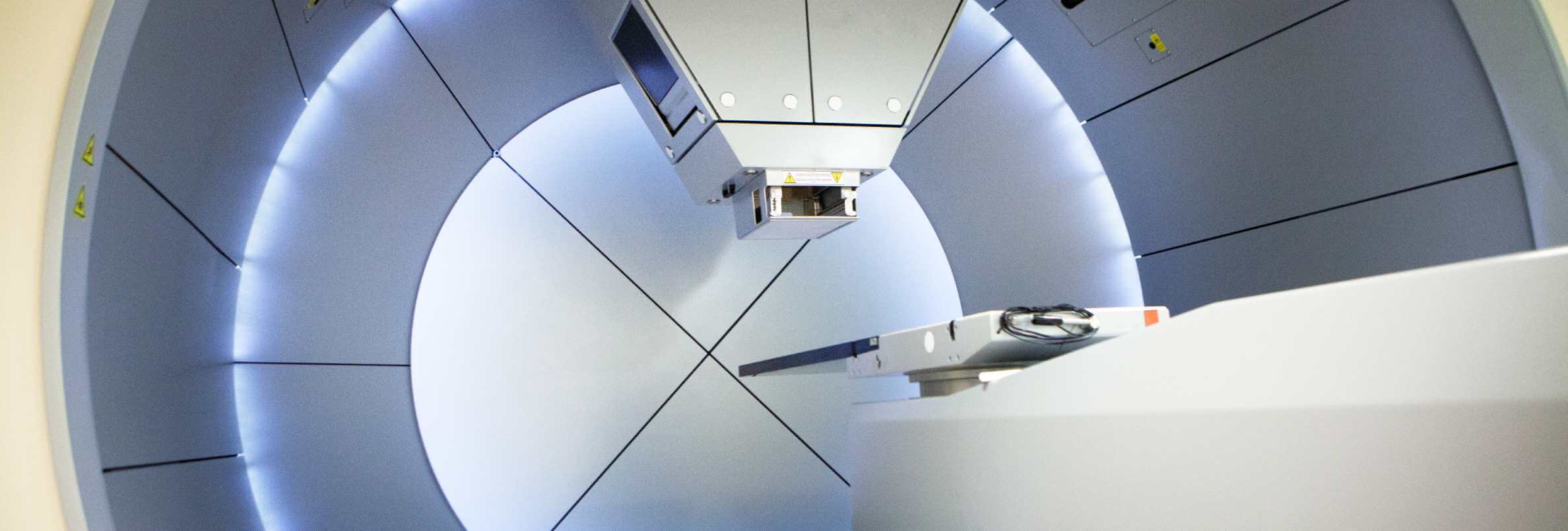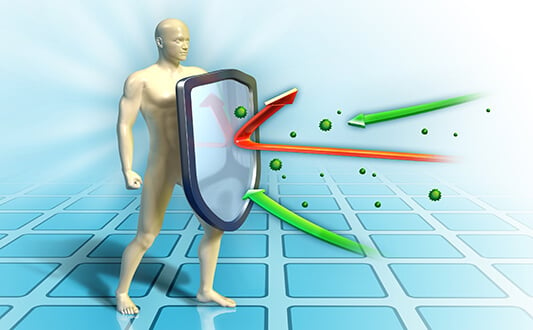Proton therapy is the most modern method of radiation therapy. Proton therapy has been carried out since the 2000s, and during this time, it has proven itself as a highly accurate and effective treatment method for malignant tumors.
Content
- What is proton therapy?
- Benefits of proton therapy
- Indications for proton therapy
- How is a proton therapy session carried out?
- Where can I undergo proton therapy?
- The costs of proton therapy courses
- How can I undergo proton therapy abroad?
What is proton therapy?
The essence of radiation therapy is the destruction of DNA in cancer cells, with the help of ionizing radiation. As a result, they stop dividing and die. Radiation therapy is carried out using different types of radiation, namely X-ray, neutron, proton, etc.
Conventional radiation therapy involves the use of photon energy (X-rays). It is known that X-rays pass through the body. As the X-ray moves, destructive energy is released. This means that not only the tumor is irradiated but also the healthy tissues on the path of the beam. Damage to healthy tissues can subsequently lead to health problems.
Proton therapy differs from conventional radiation therapy. This type of radiation therapy is based on the use of proton energy. Protons have a special movement trajectory. These particles release most of their energy at the final point in their path – the Bragg peak. When their energy is released, the protons stop. The radiologist can calculate the Bragg peak in the patient's body in such a way that it coincides with the tumor center. As a result, the tumor will get the maximum radiation dose, and the healthy tissue will receive minimal radiation.
Benefits of proton therapy
Proton radiation therapy is being increasingly used in the treatment of cancer. It is currently the most accurate and sparing irradiation technique.
Proton therapy has the following benefits:
- It can be used for the treatment of a tumor located near vital organs: the brain and spinal cord, eyes, heart, large vessels, and nerves
- It can be used in pediatric practice
- It has a lower risk of adverse reactions when compared to conventional radiation therapy
- There is good tolerance of this procedure; patients do not need additional care
Indications for proton therapy
Proton therapy is used for many cancer treatments, in both adults and children. However, due to its unique properties, this treatment method is most in-demand in the treatment of tumors located near vital organs. For example, proton irradiation for breast cancer therapy avoids damage to the heart and lungs, and as for intracranial tumors, it prevents damage to the optic nerve.
Main indications for proton therapy:
- Brain cancer;
- head and neck tumors;
- spinal cancer;
- esophageal carcinoma;
- lung cancer;
- breast cancer;
- liver cancer;
- prostate cancer.
Currently, radiologists are studying the possibility of applying proton irradiation for gastric cancer therapy, as well as for the use of proton irradiation for pancreatic cancer therapy. The doctors suggest that proton therapy has a potential advantage over conventional radiation therapy in these cases. Proton therapy reduces the radiation load on the intestine and reduces the risk of related complications.
Despite its high efficiency, proton therapy still has limitations. This type of radiation therapy can be used for only solid tumors with clear boundaries. Therefore, proton therapy for metastases is not carried out.
Proton therapy in pediatrics
Surgery, chemotherapy, and radiation therapy are used in the treatment of children with cancer. Radiation exposure in childhood is associated with certain risks, since growing organisms are sensitive to X-rays. Conventional radiation therapy can be accompanied by side effects, including long-term ones. One of the side effects of radiation therapy is the development of secondary cancer at an older age.
Proton therapy is the most advanced type of radiation therapy that affects a tumor precisely and does not damage the surrounding healthy tissue. Thanks to this type of exposure, the risk of side effects, including secondary cancer in the future, is minimal. For this reason, proton therapy is actively used in pediatric practice nowadays. Proton therapy is especially in demand in cases of brain tumors and sarcomas of the skull base, spine, and pelvis.
How is a proton therapy session carried out?
Proton therapy is performed on an outpatient basis. Patients usually undergo proton therapy 5 times a week, and the entire treatment course can last 4-7 weeks. In some cases, it may only take a couple of sessions – it depends on the particularities of the disease.
Treatment planning
Proton therapy starts with careful planning. During the planning session, the patient takes the required position on a linear accelerator table. Special devices can be used to fix body parts, for example, thermoplastic head masks. This position is required for each irradiation session.
Then, a computed tomography of the body is performed. Based on the images obtained, radiologists, along with medical physicists, determine the area of exposure and develop an individual radiation therapy plan for each patient. The radiation plan indicates how deep, at what angle, and with which intensity the beam will affect the tumor. The preparation of the irradiation plan takes 3-10 days.
Irradiation session
The patient comes to the hospital for proton therapy on the appointed day. He lays down on the linear accelerator table. Then, a CT scan is performed to make sure that the patient is in the correct position. The correct position ensures the accurate direction of the proton beams to the tumor.
After the preparation is complete, the medical staff will leave and monitor the treatment from the next room. The medical equipment is launched. The cyclotron accelerates the speed of the protons. Then, under the influence of a strong magnetic field, the protons are collected in a narrow beam, which is directed into the body at the predetermined depth, where the tumor is located. The gantry can move around the body, irradiating the tumor from different angles.
The proton therapy session takes only a few minutes. The preparation for radiation therapy lasts much longer – 20-30 minutes. The patient does not feel any discomfort during the proton therapy session. Fatigue and redness of the skin in the irradiated area are possible after the session is complete.
Where can I undergo proton therapy?
Proton therapy is an advanced radiation therapy method. It is becoming more and more popular. However, proton therapy requires expensive and complex medical equipment. As of today, about 60 Proton Therapy Centers are at work around the world.
In particular, Proton Therapy Clinics are located in the following countries:
- Germany;
- Czech Republic;
- USA;
- South Korea;
- Japan.
Proton therapy is a more expensive medical procedure compared to conventional radiation therapy. However, in certain cases, as described above, proton therapy is indispensable. In any case, the decision on the appropriateness of proton therapy will be made by your physician.
Among the leading proton therapy centers that admit patients from all over the world, it is worth noting the following:
- University Hospital Essen, Department of Adult and Pediatric Proton Therapy
- University Hospital Heidelberg, National Center for Tumor Diseases (NCT) Heidelberg
- University Hospital Giessen UKGM, Proton Therapy Center
- Proton Therapy Center of Dr. Berezin Medical Institute (MIBS) Saint Petersburg, Department of Proton Therapy
- Proton Therapy Center Prague, Department of Adult and Pediatric Proton Therapy
The costs of proton therapy courses
The cost of proton therapy, depending on the type of tumor, is as follows:
| Type of treatment | Average cost |
|---|---|
| Proton therapy for breast cancer | €65,620 |
| Proton therapy for lung cancer | €65,450 |
| Proton therapy for nasopharyngeal cancer | €65,870 |
| Proton therapy for liver cancer | €65,600 |
| Proton therapy for esophageal cancer | €65,735 |
| Proton therapy for pancreatic cancer | €65,550 |
| Proton therapy for prostate cancer | €65,600 |
| Proton therapy for soft tissue sarcoma | €65,500 |
| Proton therapy for chondrosarcoma | €65,455 |
| Proton therapy for skull base chordoma | €65,410 |
| Proton therapy for brain tumor | €65,670 |
How can I undergo proton therapy abroad?
Medical tourism operator, Booking Health, will help organize your proton therapy abroad. We cooperate directly with the leading Proton Therapy Centers in Europe and can arrange the treatment as soon as possible.
Booking Health offers the following services:
- help in selecting the medical center;
- communicating with the medical center;
- preparing the necessary documents;
- providing a favorable price for medical services, without overpricing and additional coefficients for foreign patients;
- monitoring the medical program at all its stages;
- organizing additional diagnostics and treatment if necessary;
- booking airline tickets and hotels and transfers from the airport and back.
If you want to undergo treatment abroad, you can leave a request on the Booking Health website. The manager will call you back and discuss all the details of your upcoming trip with you.
Choose treatment abroad and you will for sure get the best results!
Authors:
The article was edited by medical experts, board certified doctors Dr. Nadezhda Ivanisova, Dr. Sergey Pashchenko. For the treatment of the conditions referred to in the article, you must consult a doctor; the information in the article is not intended for self-medication!
Sources:
Read:
Why Booking Health - questions and answers
How to make right decision when choosing the clinic and specialist
7 reasons to trust to the rating of clinics on the Booking Health portal
Don't know where to start?
Contact Booking Health






